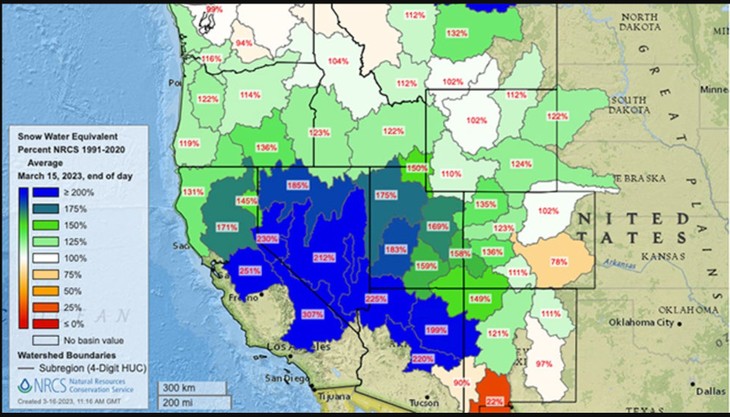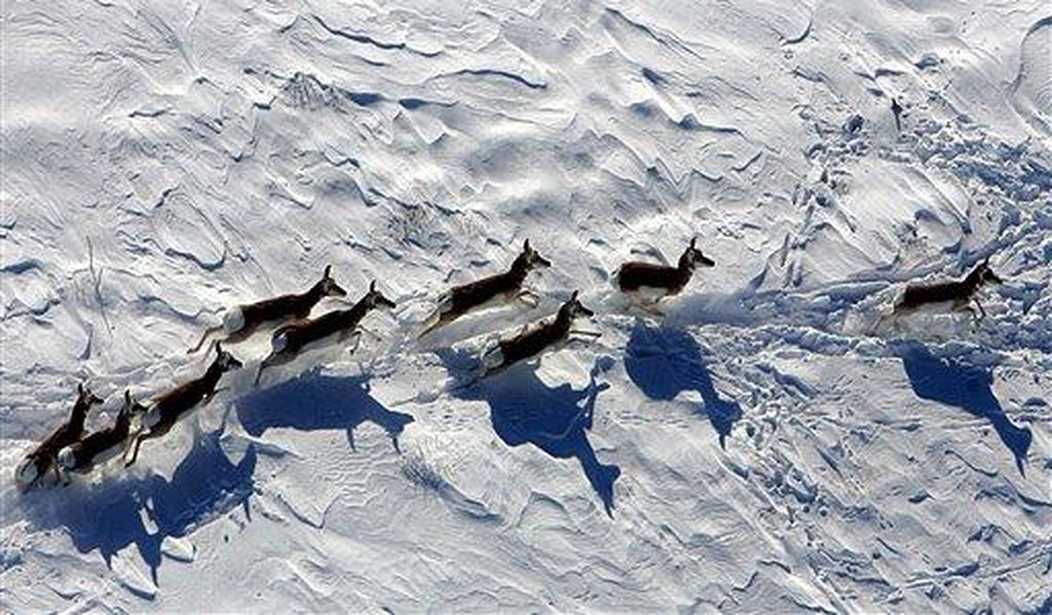I know a lot of people have their hearts set on eating bugs, and the world ending with pestilence and fire devouring humankind. Cranky as they are in their native, foaming-at-the-mouth state, the sort of intermission we seem to be in right now on our march to our self-induced, fiery (or watery, if you’re, like, on an island or in Miami) climate change doom just makes them worse. You know, the scrabbling around in Saharan dust looking for excuses to explain why we’re…well…frustrating as it is…not all dead yet. Or drowned. Or at least have wet ankles.
Considering the weather outside lately, if we were expiring in any great numbers from Global Warming/Climate Change/anything AL Gore’s ever predicted, our bodies would be well preserved into early summer.
Take the U.K.: “Balmy” is not the word for springtime in England this year.
This morning, -7.4C (18.7F) was the UK’s official low temperature, set at Loch Glascarnoch, Scotland. This breaks the nation’s coldest-ever low for the date, previously held by Glenlivet’s -6.1C (21F) set in 1956.
Mainland Europe is also enduring a late-season freeze, bringing heavy show [sic] to the higher elevations–most notably the Alps.
Our very own wild west is wooly, too, but that’s what they’re wearing, not a state of mind. Records have fallen over like frozen antelope. The snow and ice coverage extent measurements have only started since the advent of satellite monitoring in 2001, but when you approach doubling the average?
HELLO
…Starting with the chill –and according to ‘warm-mongering’ NOAA data– the U.S. has set 7 ‘all-time’ low temperature records so far this year (to April 24) vs just the 1 for heat; while in April alone (again to the 24), 321 ‘monthly’ lows have fallen vs 66 for heat.
Moving onto the snow –and in official books dating back to 2001– prior to this year, the highest-ever area of Western U.S. land covered by snow/ice at the onset of April was the 398,000 square miles posted back in 2019. This year, however, has blown past that benchmark, with satellite imagery revealing more than 444,000 square miles of the West was under snow/ice as of April 1.
For reference, the average snowpack in the Western U.S. by the end of March stands at 242,000 square miles.
That crucial mountain snowpack is at record stages in many parts of the west.
…The estimated water content of the western snowpack on March 15, 2023, expressed as a percentage of 1991-2020 average for that time of year. Areas in darkest blue, from parts of California into Nevada, northern Arizona and southwest Utah, were most above average. A number of 150 means it is 50 percent above the average for March 15.
The Central Sierra Snow Lab at Donner Pass has tallied 668 inches – over 55 feet – of snow this season, their third-snowiest season since the end of World War II.

That’s a boatload of frozen goodness that will be joining the rain in the rivers and reservoirs when it starts to melt, besides causing mayhem with flooding already saturated hillsides and inland valleys.
Crazy! In #LakeTahoe, the staff at Bear Valley Ski Resort posted this before/after photo. That’s a lot of snow! pic.twitter.com/IRzFUeW8jl
— News Source LA (@NewsSourceLA) March 14, 2023
While I myself am loving the cooler temperatures even when they reach as far south as Pensacola – staving off our hideously humid and hot summer for as long as possible is dreamy – there is real suffering going on in northern states. It’s not just folks with heating bills, either. Wildlife, particularly in hard-hit Wyoming, has been devasted by the cycle of deep snows, temporary defrost and bitter refreezes,
The numbers are heartbreaking.
…Compared to past years, this winter started earlier and has lasted longer. Also, there was above average snowpack and cold days.
“One of the most glaring examples of how cold it’s been, if you look specifically at Pinedale, in a normal year measured at their airport there are about 39 days that are below zero, and this year, there have been 62,” said Wyoming Game and Fish Department (WGFD) Director Brian Nesvick.
…Wyoming is regarded as having the most antelope in the country, and the Sublette herd is the largest in the state at a population of 40,000 before this winter. Radio collar data shows that 50 percent of the collared animals have died this winter, which is indicative of how many might have died in the entire herd, according to the WGFD. That would mean about 20,000 antelope died.
The Wyoming Range mule deer herd, one of the largest in the world at a population of about 30,000, also took a huge hit this winter. Basically all of the fawns – the entire next generation – have died. Radio collar data shows that an estimated 45 percent of adults have died too.
For perspective, in an average winter, only about 20 percent of antelope and mule deer die in these herds.
In some places, the estimates of winter kill go as high as 80% of the herds.
…This cruelest of winters is relentlessly diminishing a wildlife treasure like no other on earth into piles of frozen carcasses. Wyoming’s legacy as a world-class hunting and wildlife watching destination lies scattered across lonely places that as of late have gotten just too damn cold and windy for hope.
…In the core of Wyoming’s antelope habitat, places such as the Rawlins-Red Desert region, or in the country around Baggs, it’s been predicted that as many as 50-80% of the antelope won’t survive the winter. And as many as half of the deer could die.
“If those numbers are true, or come out to be true, then it’s on a scale the likes of which we’ve never seen in most of our lifetimes,” Eastman said.
That’s an extinction event no one could have predicted. It is incredibly frustrating because there is no way to alleviate the suffering. You can’t kick hay out to starving deer and antelope. They’ll eat it, yes, but their systems cannot process it and often that winds up killing them. You can take a road scraper or plow and push the snow and ice away from whatever is underneath but that tears up the sagebrush. That western shrub is an essential foodstuff for the native artiodactylates (even-toed, hoofed mammals) like the pronghorn and mule deer who inhabit the range. Sagebrush takes years to recover if uprooted or abused, if it recovers at all. Frantic wildlife specialists and gamekeepers are at their wits’ end.
The state has slashed some species hunting tags for next fall already and there are discussions about instituting multiyear hunting moratoriums in some of the hardest-hit areas, all in an effort allow natural populations to reestablish themselves.
Wyoming is having its coldest winter in living memory. Wildlife are starving and freezing to death. Reminder that we are still in the Pleistocene Ice Age. Climate Crisis is 100% fake. There’s always been weather crises.#CelebrateCO2!!https://t.co/wiO36XG5LO
— Patrick Moore (@EcoSenseNow) April 19, 2023
And there is still snow on the ground and freezing temps.
…[Cowboy State Daily meteorologist Don] Day pointed to data compiled by the National Snow and Ice Data Center (NSIDC) that shows the 2023 snowpack in all the Western states, from Arizona to Nebraska, is dramatically over average.
In fact, South Dakota, Nebraska and Arizona had the broadest areas of remaining snow cover, at 350% of the average as of the last day of March this year — and Wyoming sits close to 190% of average.
“You can have really snowy years, but by the end of March, you’ve lost a lot of the snow,” Day said. “But not this year, since it’s been such a cold winter and spring over most of the northern and western United States.”
While dramatic and so gol dang sad, it’s still just the normal ebb and flow of what used to be referred to as “winter” – you remember? The season that normally came after Thanksgiving before hysterics started naming blizzards and ginning up a possible 4mm sea rise as a catastrophe? The same people who can’t begin to tell you what percentage of the atmosphere the carbon that’s supposed to be killing us actually is?
The CO2 Coalition’s Jim Steele outs NPR for sensationalized BS about flooding in California. There is absolutely no evidence that flooding of natural floodplains is caused by “global warming”. It’s been happening for centuries. Hire the Dutch.https://t.co/7bpPd7hiy2 pic.twitter.com/WnzYqTPUGs
— Patrick Moore (@EcoSenseNow) April 9, 2023
Those same people will tell you it’s still cold because we’ve made it warm.
Trust the Science™








Join the conversation as a VIP Member